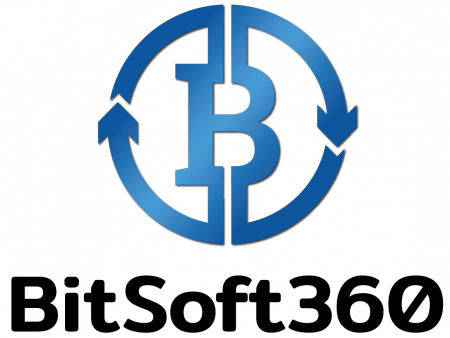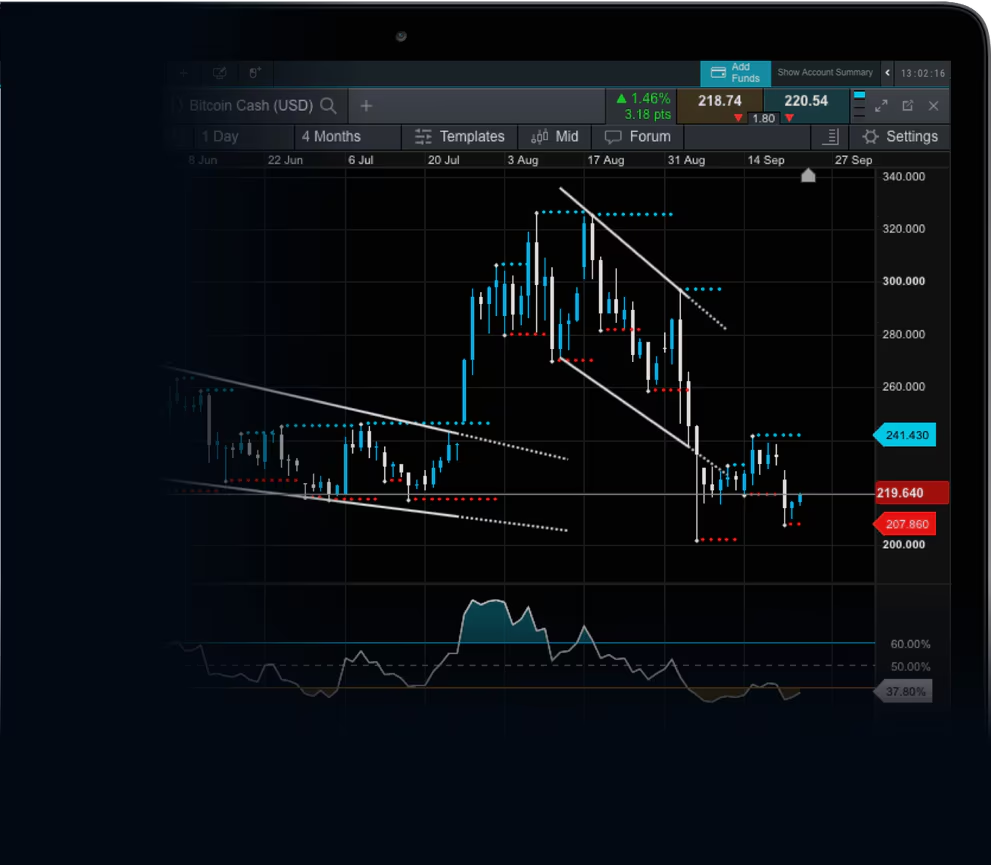Bitcoin mining is a topic that has gained significant attention in recent years as the popularity of cryptocurrencies, especially Bitcoin, continues to grow. While the concept of mining may seem confusing to some, it is a fundamental part of how Bitcoin operates.
In simple terms, Bitcoin mining is the process of adding new transactions to the public record of Bitcoin transactions, also known as the blockchain. This is done by solving complex mathematical problems using specialized hardware and software.
The reason why mining is necessary is that it serves as a way to verify and secure the network. By adding new transactions to the blockchain, miners ensure that all transactions are valid and that no one can cheat the system. In return for their efforts, miners are rewarded with newly minted Bitcoins.
What makes Bitcoin mining particularly fascinating is the decentralized nature of the process. Unlike traditional banking systems, where a central authority controls and verifies transactions, Bitcoin relies on a network of miners spread across the world to maintain its security and integrity.
In conclusion, Bitcoin mining is a crucial aspect of the cryptocurrency world, playing a vital role in verifying transactions and maintaining the integrity of the network. By understanding the process behind mining, we can gain a better understanding of how Bitcoin operates as a digital currency.
The Basics of Bitcoin Mining
Bitcoin mining is the process by which new bitcoins are created and transactions are confirmed and added to the public ledger called the blockchain. This process is essential for the security and maintenance of the Bitcoin network.
How Does Bitcoin Mining Work?
Bitcoin mining requires powerful computers that solve complex mathematical problems. These problems are used to validate and verify transactions on the network. Miners compete with each other to solve these problems and the first miner to find a solution is rewarded with newly minted bitcoins.
Bitcoin mining is a decentralized process, meaning that anyone with the necessary hardware and software can participate. However, the probability of mining a block and earning bitcoins is proportional to a miner’s computational power, or hash rate.
The Role of Mining Pools
Due to the increasing difficulty of mining and the amount of computational power required, individual miners often join mining pools. Mining pools are groups of miners who work together to solve blocks and share the rewards.
By pooling their resources, miners increase their chances of earning bitcoins. The rewards are distributed among pool members based on their contributed computational power. This method ensures a more consistent and predictable income for miners.
The Importance of Mining for Bitcoin
Mining plays a crucial role in the Bitcoin ecosystem. It not only creates new bitcoins, which helps keep the supply limited and valuable, but it also confirms and secures transactions. Each new block added to the blockchain contains a record of verified transactions.
Bitcoin mining also acts as a decentralized consensus mechanism. By requiring miners to solve complex problems, it prevents any single entity from gaining control over the network. This makes Bitcoin resistant to censorship and manipulation.
Energy Consumption and Environmental Impact
Bitcoin mining requires a significant amount of energy, as the computers are constantly running complex calculations. This has raised concerns about the environmental impact of mining, particularly in regions where the majority of the electricity comes from non-renewable sources.
Efforts are being made to develop more energy-efficient mining methods, such as using renewable energy sources or optimizing the mining hardware. However, it is important to acknowledge that the energy consumption of Bitcoin mining is a trade-off for the security and decentralization of the network.
Conclusion
Bitcoin mining is a fundamental aspect of the digital currency, providing security, validation, and new bitcoins. While it requires significant computational power and energy consumption, it plays a crucial role in maintaining the integrity and decentralization of the Bitcoin network.
The Role of Miners in the Bitcoin Network
Miners play a crucial role in the Bitcoin network by performing the essential task of verifying and adding transactions to the blockchain. While anyone can participate in Bitcoin mining, miners need specialized hardware and software to compete against other miners in solving complex mathematical problems.
Verification of Transactions: When a Bitcoin transaction occurs, it is broadcasted to the network and picked up by miners. Miners collect transactions into blocks and validate the authenticity of each transaction. They ensure that the sender has enough Bitcoins to make the transaction and that the transaction hasn’t already been spent.
Proof-of-Work: Once the transactions are verified, miners compete to solve a cryptographic puzzle known as a “proof-of-work.” The first miner to solve the puzzle is rewarded with newly minted Bitcoins and any transaction fees associated with the block. This process requires a significant amount of computational power, as miners need to make numerous guesses until they find a solution.
Block Addition to the Blockchain: After a miner has successfully solved the proof-of-work, the newly created block is added to the blockchain. The blockchain is a decentralized public ledger that maintains a record of all Bitcoin transactions. Each block contains a reference to the previous block, creating a chain of blocks. This ensures the immutability and security of the Bitcoin network.
Consensus Mechanism: The Bitcoin network relies on a consensus mechanism known as ‘Proof-of-Work.’ This mechanism ensures that the majority of miners in the network agree on the validity of transactions, preventing double-spending and other fraudulent activities. The proof-of-work system incentivizes miners to act honestly since they would need to invest resources to solve the puzzles and mine new blocks.
Decentralization and Security: The decentralized nature of Bitcoin mining ensures that no single entity can control the network. Miners from around the world contribute their computational power, making it difficult for any individual or organization to manipulate the system. The large number of miners also strengthens the network’s security, as it becomes harder for an attacker to control a majority of the mining power and compromise the integrity of the blockchain.
Importance of Miners: Miners play a critical role in maintaining the functionality, security, and integrity of the Bitcoin network. Without miners, the network would be vulnerable to manipulation, and transactions would not be reliably verified and added to the blockchain. Therefore, miners are essential to the success and widespread adoption of Bitcoin as a digital currency.
How Does Bitcoin Mining Work?
Bitcoin mining is the process by which new bitcoins are generated and transactions are verified on the Bitcoin network. It is an essential component of the decentralized nature of Bitcoin and allows for the creation and distribution of new bitcoins.
1. Mining Hardware
The first step in Bitcoin mining is obtaining the necessary hardware. Miners use specialized computers called ASICs (Application Specific Integrated Circuits) to mine bitcoins. These devices are specifically designed to perform the complex calculations required to mine bitcoins efficiently.
2. Mining Software
Once the mining hardware is in place, miners need to install mining software. This software connects the miner’s hardware to the Bitcoin network and allows it to participate in the mining process. The software also keeps track of all the transactions and blocks on the network.
3. Solving Complex Mathematical Problems
To mine bitcoins, miners need to solve complex mathematical problems. These problems are designed to be difficult and time-consuming to solve, ensuring the security of the Bitcoin network. Miners compete against each other to solve these problems, and the first miner to find a solution is rewarded with newly minted bitcoins.
4. Validating Transactions
As miners solve these mathematical problems, they also validate the transactions on the Bitcoin network. They check that the transactions are legitimate and have not been tampered with. Once a group of transactions, known as a block, is validated, it is added to the blockchain, which is a permanent and immutable record of all Bitcoin transactions.
5. Mining Pools
Due to the high level of competition in Bitcoin mining, many miners join mining pools. A mining pool is a group of miners who pool their resources together to increase their chances of mining a block and earning bitcoins. When a block is successfully mined, the rewards are distributed among the members of the pool based on their contribution to the mining process.
6. Bitcoin Reward
The main incentive for miners to participate in the mining process is the block reward. Currently, each block mined rewards the miner with 6.25 bitcoins. This reward serves as an incentive to secure the network and incentivize miners to continue mining.
7. Halving
To control the supply of bitcoins, the block reward is halved approximately every four years in a process called halving. This means that the amount of new bitcoins generated per block decreases over time. The last halving occurred in May 2020, reducing the block reward from 12.5 bitcoins to 6.25 bitcoins.
In conclusion, Bitcoin mining is a crucial process that ensures the security of the Bitcoin network and allows for the creation and distribution of new bitcoins. It involves solving complex mathematical problems, validating transactions, and earning rewards for the successful mining of blocks.
The Process of Creating Bitcoin
Bitcoin creation involves a complex process known as mining, which is the backbone of the entire Bitcoin network. This process involves the creation of new bitcoins and the verification of Bitcoin transactions.
1. Mining Hardware
To begin the process of creating bitcoins, miners need specialized hardware. These mining rigs are equipped with powerful processors known as ASICs (Application-Specific Integrated Circuits). ASICs are designed specifically for mining and are much more efficient than traditional processors.
2. Mining Pools
As the mining process has become more difficult and resource-intensive, individual miners have started forming mining pools. A mining pool is a group of miners who combine their computing power to increase their chances of successfully mining a new block. When a block is successfully mined, the rewards are distributed among the participants in the pool.
3. Solving Complex Mathematical Problems
Miners use their mining hardware to solve complex mathematical problems, called hash functions. These problems require significant computational power to find a solution. The miner who solves the problem first gets to add the next block to the blockchain and is rewarded with a certain number of bitcoins.
4. Verifying Transactions
Aside from mining new bitcoins, miners also play a crucial role in verifying Bitcoin transactions. Every transaction that occurs on the Bitcoin network needs to be validated by miners. They ensure that the sender has sufficient funds and that the transaction is legitimate before adding it to a new block.
5. Block Reward
Once a miner successfully mines a new block and verifies the transactions within it, they are rewarded with a certain number of bitcoins. This reward acts as an incentive for miners to continue participating in the network and securing the blockchain.
6. Halving of Rewards
The process of creating bitcoins also includes a built-in mechanism called “halving.” Approximately every four years, the reward for mining a new block is cut in half. This ensures that the total supply of bitcoins is limited. As a result, over time, the creation of new bitcoins becomes more challenging and resource-intensive.
7. Cryptographic Security
The creation of bitcoins is secured by cryptographic algorithms. Each block of transactions is linked to the previous block, creating a chain of blocks, or the blockchain. The security and integrity of the network rely on miners competing to solve complex mathematical problems, ensuring that no one can alter past transactions or create new bitcoins fraudulently.
In conclusion, the process of creating bitcoins involves mining hardware, mining pools, solving complex mathematical problems, verifying transactions, block rewards, halving of rewards, and cryptographic security. This process is what keeps the Bitcoin network secure and allows for the creation and circulation of this digital currency.
The Importance of Mining Difficulty
Mining difficulty is a crucial concept in the world of Bitcoin mining. It refers to the measure of how hard it is to find a new block on the Bitcoin blockchain, and it plays a vital role in maintaining the stability and security of the Bitcoin network.
Why does mining difficulty matter?
The primary reason mining difficulty is important is to ensure that new blocks are added to the blockchain at a consistent rate. This rate is crucial for several reasons:
- Security: A higher mining difficulty makes it more challenging for attackers to manipulate the blockchain. As the difficulty increases, it becomes increasingly unlikely for an attacker to control more than 50% of the network’s computing power, reducing the risk of a 51% attack.
- Consistency: By adjusting the mining difficulty, the Bitcoin network aims to maintain a block generation time of approximately 10 minutes. This consistency is essential for ensuring that transactions are confirmed promptly and that the network operates smoothly.
- Economic incentives: Mining difficulty affects the rewards miners receive for successfully mining a new block. The difficulty adjusts based on the total computational power of the network, ensuring that the number of newly minted Bitcoins remains relatively stable over time.
How is mining difficulty determined?
The mining difficulty is recalculated approximately every two weeks, or after every 2016 blocks mined. The adjustment is based on the total computational power of the network, aiming to maintain an average block generation time of 10 minutes.
The calculation of mining difficulty involves a mathematical formula that takes into account the time it took to mine the previous 2016 blocks. If the average block generation time was shorter, the difficulty will increase, making it harder to find a new block. Conversely, if the average block generation time was longer, the difficulty will decrease.
The future of mining difficulty
As the Bitcoin network continues to grow and evolve, the mining difficulty is expected to increase. This is due to the increase in the number of miners and their computing power, as well as the limited supply of new Bitcoins to be mined.
However, it’s important to note that mining difficulty alone does not determine the success or profitability of Bitcoin mining. Factors such as the cost of electricity, the price of Bitcoin, and the efficiency of mining equipment also play significant roles.
Overall, understanding mining difficulty is essential for anyone interested in Bitcoin mining. It helps ensure the security and stability of the network, while also influencing the economic incentives for miners.
The Equipment and Software for Bitcoin Mining
Bitcoin mining requires specialized equipment and software to solve complex mathematical problems. Here are some of the essential components for successful mining:
1. Mining Hardware:
The heart of Bitcoin mining is the mining hardware, which is responsible for performing the calculations necessary to validate and add new transactions to the blockchain. The most common types of mining hardware are:
- Application-Specific Integrated Circuits (ASICs): These are custom-built chips designed specifically for mining Bitcoin. ASICs offer high hash rates and energy efficiency, making them the preferred choice for professional miners.
- Graphics Processing Units (GPUs): GPUs, commonly used for gaming and graphics-intensive tasks, can also be used for mining. While not as efficient as ASICs, they are more affordable and accessible to hobbyist miners.
- Field Programmable Gate Arrays (FPGAs): FPGAs are customizable chips that offer a balance between efficiency and flexibility. They are less common than ASICs and GPUs but provide a middle ground for mining.
2. Power Supply:
Mining hardware consumes a significant amount of electricity. A reliable power supply unit (PSU) is crucial to ensure stable operation. Miners often opt for high-wattage PSUs to meet the power demands of their equipment.
3. Cooling System:
Given the high power consumption, mining equipment generates a substantial amount of heat. To prevent overheating, miners use cooling systems like fans or liquid cooling to maintain optimal operating temperatures.
4. Internet Connection:
A reliable and high-speed internet connection is required for mining. Miners need to connect to the Bitcoin network to receive and transmit block data.
5. Mining Software:
Mining software is responsible for connecting the mining hardware to the Bitcoin network and coordinating the mining process. It includes features such as:
- Stratum protocol support: This protocol allows miners to communicate with mining pools and receive work assignments.
- Hash rate monitoring: Software provides real-time information on the mining hardware’s hash rate.
- Temperature and fan speed monitoring: To ensure efficient cooling, software monitors the temperature and fan speed of the mining equipment.
- Wallet integration: Mining software can be linked to a Bitcoin wallet, allowing miners to receive their mining rewards.
6. Mining Pool:
While it is possible to mine Bitcoin individually, most miners join mining pools. Mining pools combine the resources of multiple miners, increasing the chances of earning block rewards. Pools distribute rewards based on the miner’s contributions.
Conclusion:
Bitcoin mining requires specialized equipment, including mining hardware, power supplies, cooling systems, and a reliable internet connection. In addition, miners need mining software to connect their hardware to the Bitcoin network and join mining pools to increase their chances of earning rewards.
The Economic Incentives for Bitcoin Miners
Bitcoin miners play a vital role in the operation of the Bitcoin network. They are responsible for verifying transactions and appending them to the blockchain, which is the decentralized ledger that records all Bitcoin transactions. In return for their work, miners receive economic incentives that make participating in the mining process financially rewarding.
Block Rewards
One of the key economic incentives for Bitcoin miners is the block reward. Every time a miner successfully solves a complex mathematical problem and adds a new block to the blockchain, they are rewarded with a certain amount of newly minted bitcoins. This reward serves as an incentive for miners to dedicate their computing power to secure the network and validate transactions. Currently, the block reward is set at 6.25 bitcoins per block, and it is halved approximately every four years in a process known as the “halving”. This ensures that the total supply of bitcoins is limited, creating scarcity and value.
Transaction Fees
In addition to the block reward, miners also receive transaction fees. Whenever a user sends a Bitcoin transaction, they have the option to include a small fee as an incentive for miners to prioritize their transaction and include it in the next block. Miners choose to include transactions with higher fees first, as they are financially motivated to maximize their earnings. This fee serves as an additional economic incentive for miners, especially as the block reward diminishes over time due to the halving process.
Economic Competition
The economic incentives offered to Bitcoin miners create a competitive environment. Miners need to invest in expensive hardware, such as specialized mining rigs called ASICs (Application-Specific Integrated Circuits), and pay for electricity and cooling costs. They must also constantly upgrade their equipment to compete with other miners and maintain profitability. Only the most efficient and economically viable miners can remain competitive in the Bitcoin mining ecosystem.
Network Security and Decentralization
The economic incentives provided to Bitcoin miners are essential for maintaining the security and decentralization of the network. Miners are financially motivated to act honestly, as attempting to manipulate the system or cheat the network would ultimately harm their own profitability. Furthermore, the decentralized nature of Bitcoin mining, with miners distributed globally, ensures that no single entity can control or manipulate the entire network. This decentralization increases the security and trustworthiness of the Bitcoin network as a whole.
In conclusion, the economic incentives for Bitcoin miners play a critical role in sustaining the operation and security of the Bitcoin network. The block reward and transaction fees provide miners with financial rewards for their work, while also promoting competition and ensuring the network’s decentralization. These incentives are essential for the continued success and growth of Bitcoin as a digital currency.
The Environmental Impact of Bitcoin Mining
Bitcoin mining has attracted significant attention not only for its potential to generate profits, but also for its environmental impact. The process of mining involves solving complex mathematical problems using powerful computers, which consume a significant amount of energy. As a result, the environmental impact of bitcoin mining has become a subject of concern.
Energy Consumption
Bitcoin mining requires a large amount of energy to power the computers that solve the mathematical problems. In fact, according to a study by Digiconomist, the annual energy consumption of the Bitcoin network is equivalent to that of some countries. This high energy consumption contributes to carbon emissions and the depletion of natural resources.
Carbon Footprint
The energy that powers bitcoin mining often comes from fossil fuel sources, such as coal or natural gas. Burning these fossil fuels releases greenhouse gases, contributing to climate change. The carbon footprint of bitcoin mining is significant, as the energy consumption of mining operations continues to increase.
E-Waste
The hardware used for bitcoin mining, such as specialized mining rigs or graphics processing units (GPUs), quickly become obsolete as new, more efficient models are developed. This leads to a significant amount of electronic waste (e-waste) generated by the mining industry. The disposal of e-waste can be harmful to the environment if not handled properly.
Renewable Energy Solutions
Efforts are being made to mitigate the environmental impact of bitcoin mining. Some mining operations are located in regions with access to abundant renewable energy sources, such as hydroelectric power. By using renewable energy, these operations can reduce their carbon footprint and contribute to a more sustainable mining industry.
Conclusion
The environmental impact of bitcoin mining cannot be ignored. The high energy consumption, carbon emissions, and e-waste generated by the mining industry are areas of concern. As the demand for bitcoin continues to rise, it is crucial for the industry to find sustainable solutions to minimize its environmental impact and contribute to a greener future.
The Future of Bitcoin Mining
Bitcoin mining has come a long way since its inception in 2009. As the popularity of Bitcoin has grown, so has the complexity and competition of the mining process. The future of Bitcoin mining holds both promise and challenges.
Innovation and Efficiency
One of the main trends in the future of Bitcoin mining is the constant drive for innovation and efficiency. As the mining process becomes more complex, miners are constantly looking for ways to improve their hardware and software to stay competitive.
Advancements in mining hardware, such as the introduction of specialized ASIC (Application-Specific Integrated Circuit) chips, have greatly increased the efficiency of mining operations. These chips are specifically designed to perform the calculations required for mining Bitcoin, resulting in faster and more energy-efficient mining processes.
Furthermore, there is ongoing research and development in the field of mining software. New algorithms and protocols are being developed to optimize the mining process and reduce the computational power required.
Sustainability and Environmental Impact
As Bitcoin mining becomes more popular, concerns about its environmental impact have also emerged. The energy consumption needed for mining operations has raised questions about the sustainability of Bitcoin as a digital currency.
In response to these concerns, there have been efforts to develop more sustainable mining practices. Some miners are exploring the use of renewable energy sources, such as solar or wind power, to power their mining operations. This not only reduces the carbon footprint but also makes mining more economically viable in the long run.
Additionally, there is ongoing research into alternative consensus algorithms that could potentially replace the energy-intensive Proof of Work (PoW) algorithm currently used by Bitcoin. These alternative algorithms, such as Proof of Stake (PoS), require less computational power and energy consumption.
Regulatory Challenges
As Bitcoin mining continues to grow, regulatory challenges are also emerging. Governments and regulatory bodies around the world are grappling with how to effectively regulate and monitor the mining industry.
Some countries have embraced Bitcoin mining and have established clear regulations and guidelines for miners. Others, however, have taken a more cautious approach and have imposed restrictions or bans on mining activities.
The future of Bitcoin mining will likely involve a delicate balance between regulation and innovation. Striking the right balance will be crucial to ensure the continued growth and sustainability of the mining industry.
Conclusion
The future of Bitcoin mining holds both excitement and uncertainty. As technology continues to advance, we can expect further innovation and efficiency in the mining process. However, challenges such as environmental impact and regulatory hurdles will need to be addressed for the industry to thrive.
Overall immediate edge, Bitcoin mining will continue to play a vital role in the growth and development of the digital currency. Its future will depend on the ability of miners to adapt to evolving technologies and regulations while maintaining the integrity and security of the Bitcoin network.








I found this article on Bitcoin mining incredibly informative. Being a woman interested in the world of cryptocurrencies, it’s crucial for me to understand the intricacies of this digital currency. The article does an excellent job of breaking down the process of Bitcoin mining, shedding light on the secrets behind it. The explanation of how miners solve complex mathematical problems to validate transactions and create new blocks fascinated me. It’s amazing to think about the computational power and electricity required for this process. The fact that specialized hardware, such as ASICs, is used to mine Bitcoins further emphasizes the complexity and competitiveness of this field. I appreciated the article’s emphasis on the decentralized nature of Bitcoin mining. Learning about the concept of mining pools and how they contribute to the overall security and stability of the Bitcoin network was enlightening. The mention of the block reward halving and its potential impact on miners was thought-provoking as well. Overall, this article provided a comprehensive overview of Bitcoin mining, and it left me with a greater understanding of this intriguing digital currency. I’m excited to continue exploring the world of cryptocurrencies and delve deeper into the secrets behind Bitcoin mining.
The article “Understanding the Process of Bitcoin Mining: Uncovering the Secrets Behind This Digital Currency” provides a comprehensive explanation of the intricate process of Bitcoin mining. As a female reader, I find this article extremely informative and engaging. It breaks down the technical aspects of mining into easily understandable language, allowing even someone with limited knowledge to grasp the concepts. The article delves into the underlying technology behind Bitcoin mining, such as blockchain and cryptographic hash functions. It explains how miners compete to solve complex mathematical problems, ensuring the security and integrity of the Bitcoin network. I appreciate the author’s effort to make this complex process accessible to a wider audience. Furthermore, the article explores the environmental impact of Bitcoin mining and highlights the growing concerns over energy consumption. This section is particularly relevant and thought-provoking, as sustainability is an issue close to my heart. It would be interesting to see more analysis on how the industry can mitigate its environmental footprint in the future. Overall, this article is an excellent resource for anyone seeking a deeper understanding of Bitcoin mining. I commend the author for their thorough research and ability to present the information in a concise and engaging manner. I look forward to reading more insightful articles on this topic in the future.
As a reader, I found this article on understanding the process of Bitcoin mining to be highly informative and engaging. It offered a comprehensive explanation of the concept, making it easy for someone like me, who is not well-versed in technology, to understand. The article delved into the intricate details of how miners use their computational power to solve complex mathematical problems and ultimately validate transactions. I appreciate how the author highlighted the decentralized nature of Bitcoin and how mining plays a crucial role in maintaining the network’s security. The inclusion of real-life examples and statistics made the article even more interesting and relatable. Overall, this article has provided me with a better understanding of Bitcoin mining and the secrets behind this digital currency. I look forward to reading more articles on this fascinating topic.
As a female reader, I found this article on “Understanding the Process of Bitcoin Mining: Uncovering the Secrets Behind This Digital Currency” highly informative and engaging. It provided a comprehensive explanation of the complex world of Bitcoin mining in a way that was easy to understand. I have always been curious about how Bitcoin is created and the article addressed my questions with clarity. The step-by-step breakdown of the mining process helped me grasp the concept of solving mathematical puzzles to validate transactions and receive bitcoins as rewards. The article also highlighted the importance of mining pools and the role they play in increasing the chances of successfully mining bitcoins. Learning about the specialized hardware used in mining, such as ASICs, was fascinating as it shed light on the technological advancements driving the mining industry. Additionally, the article touched upon the energy consumption associated with Bitcoin mining, which is a topic of concern for many. It stressed the need for sustainable mining practices and the potential for renewable energy sources to mitigate environmental impact. In conclusion, this article provided a comprehensive overview of Bitcoin mining and the secrets behind this digital currency. It satisfied my curiosity and left me with a better understanding of the intricate processes involved. I would recommend this article to anyone seeking an in-depth understanding of Bitcoin mining.